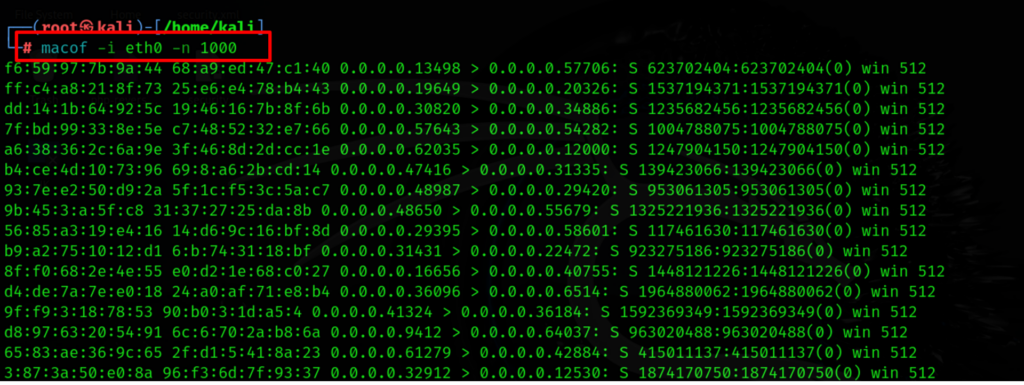How do hackers flood a network switch to force it into acting like a hub, exposing all network traffic? One tool often used for this is Macof. It’s a powerful utility that can overwhelm a switch by sending many MAC addresses, causing it to failover into hub mode—making network sniffing easier.
This article breaks down Macof in a simple, easy-to-understand way. Whether you are a cybersecurity enthusiast, a red teamer, or a network defender, you will walk away precisely knowing what Macof does and how to counter it.
**Note: The content in this article is only for educational purposes and understanding of cybersecurity concepts. It should enable people and organizations to have a better grip on threats and know how to protect themselves against them. Please use this information responsibly.**
What is Macof?
It is a part of the dsniff suite. This is a collection of security tools that can be used for network traffic analysis and penetration testing. It is specifically used to perform MAC flooding attacks by generating an overwhelming number of fake MAC addresses on a network.
Key Features of Macof:
- Generates thousands of random MAC addresses per second.
- Overloads a network switch’s CAM table (Content Addressable Memory).
- This causes the switch to enter fail-open mode, essentially turning it into a hub.
- Untangle access to capture unicast network traffic, which would otherwise be invisible to the attackers.
How Does Macof Work?
Switches track which MAC addresses are connected to which ports using the CAM table. These tables have limited space. When this table is complete, a switch no longer knows where to send packets and floods them to all its ports, much like a network hub.
Step-by-Step Attack Process:
- The attacker launches Macof on a compromised or connected machine within the target network.
- Macof rapidly generates random MAC addresses and associates them with the attacker’s port.
- The CAM table in the switch gets saturated, and it cannot learn any new MAC addresses.
- The switch goes into fail-open mode, broadcasting traffic to all the connected devices.
- The attacker captures sensitive data like passwords and private conversations using a packet-sniffing tool like Wireshark.
How to Use Macof
Using this tool is extremely simple. It requests just one command:
$ macof -h

$ macof -i eth0

To limit the number of packets sent:
$ macof -i eth0 -n 1000

Specify a target IP:
$ macof -i eth0 -d 192.168.64.150

Defending Against Macof Attack
- Enable Port Security
Port security limits the number of MAC addresses per port. The switch blocks the port if a device attempts to exceed the limit.
- Use VLAN Segmentation
VLANs separate network traffic so that even if an attack is successful, it doesn’t affect the entire network.
- Implement DHCP Snooping
DHCP snooping prevents hackers from injecting spurious MAC addresses into the network by only allowing trusted devices to request DHCP.
- Anomalous Traffic Monitoring
Using IDS tools like Snort or Suricata, one can detect abnormal behavior on the network, such as a sudden MAC address flood.
Conclusion
This penetration testing tool, Macof, identifies network switch vulnerabilities. This is mostly what ethical hackers use to penetrate the network. However, its misuse can occur as a man-in-the-middle attack by cyber-crooks.
The good news? Simple network security measures, including port security, VLANs, and monitoring, can stop Macof attacks completely.






